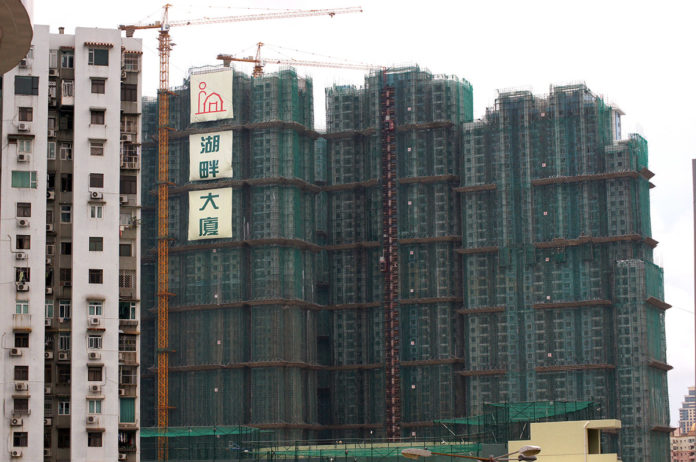The situation for meeting the demand for public housing is positive in the long run, although the current supply is not yet sufficient to meet demand, according to
Arnaldo Ernesto dos Santos, president of the Housing Bureau.
The statements were made at the first meeting of the Public Housing Affairs Committee, in which the Public Housing Demand Research report was also divulged. The report found that demand for public housing would reach 31,247 by 2021 while the government is capable of supplying 9,273 units in the same period.
However, by 2023, supply would be able to match demand.
Regarding the long term prospects, the Bureau head said that “with the reclaimed land plots in front of the Airport and the reclaimed land Zone A almost completed we will have the opportunity to catch up with demand,” noting that the short supply at the moment is due to land shortage.
In addition, the current progress towards revising the public housing law will “allow a better and more balanced distribution of resources while satisfying demand little by little”.
According to the report, the study estimates that 49,873 public housing units will be provided by 2026, which would be capable of meeting the 36,592 unit demand estimated for the same year. Of the total demand for public housing in 2026, 19,496 would be for social housing units, while 22,905 would be for economic housing.
However, also taking into account potential supply from the private sector, the report also indicated there will have be a certain number of units becoming vacant by 2026.
Regarding the total potential supply from both public and private housing sectors in the coming decade, unit numbers would increase by 77,387, to total 296,397, adding to the current 219,010 units in the city.
The report also suggests the government roll out half of the public housing project units from the New Zone A to meet the demand for public housing before 2023 and that the other half of the project be saved for future development in accordance with changes in the population and economy. The potential 22,000 units that can be provided in Zones B, C, D and E can also be used for long-term planning.
The report also advises updating information on demand as well as estimates of demand for public housing every five years with demographic and census data.
Meanwhile, when asked about the schedule for a new round of applications for economic housing, Santos said it would at the earliest be one to two years following the completion of the environmental evaluation of the Wai Long Public Housing project.
“For economic housing applications, there needs to be in place plans such as the locations and how many units are available and we can only open [applications] after acheiving this,” he said.
Xiaochun Qiao – a professor at the Institute of Population Research of Peking University and one of the team elaborating upon the report – said the MSAR Government needs to plan out the steps.
“The most urgent [thing] is the government should put planning into further provision of public housing through construction […] given the limited supply and the short period of time, despite the plan being elaborated […] the government needs to speed up,” said Professor Xiao.
As stated in the report, the increased supply of public housing would be made in the mid and long-term period, but there would be a larger impact on private housing, said the professor.
Increasing ratio of public housing
The report reveals that the ratio percentage of public housing within the housing market has increased to 22 per cent, with the completion volume of public housing exceeding the volume of private housing since 2011, accounting for 56.9 per cent of the total supply of housing in the city.
Meanwhile, according to the report, the average household size in the city is becoming smaller, with estimates for 2.93 persons per family unit by 2026, down from 3.08 in 2016.
From the perspective of economic housing, the report estimates that 33 per cent of the demand for economic housing units would be two-member households, while households that contain one member or three members would each account for about 25 per cent of demand. For households with four members, the estimated amount would be 14 per cent.
More meetings to come
The Bureau head said another meeting with the committee will be held next month.
“We will have more meetings; with the report having been released we wish to get more opinions from committee members in order to lay out policies given that the committee is set up to help the government to set housing policy,” said Santos.
The last meeting was held in 2015.
























